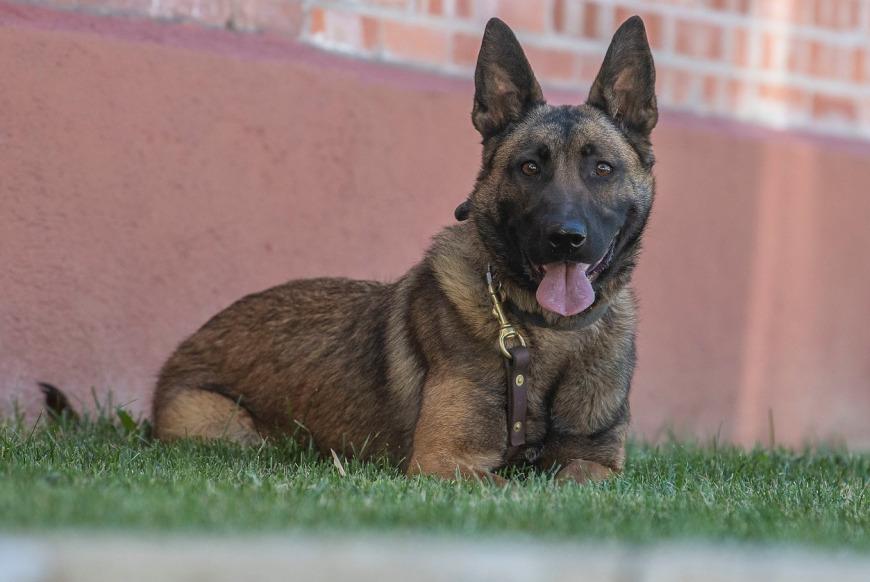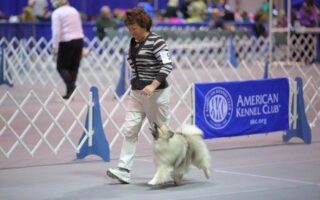In a world where safety and security often feel elusive, the bond between humans and dogs has evolved into a remarkable partnership that transcends companionship. Enter personal protection dog training—an art and science that transforms spirited canines into steadfast guardians. With a skillful blend of behavioral psychology, command obedience, and instinctual drive, this specialized training equips dogs not just to protect, but to serve as reliable allies in times of uncertainty. As we delve into the intricate layers of personal protection dog training, we will explore its philosophies, techniques, and the profound impact it can have on the lives of both dogs and their human counterparts. Whether you seek peace of mind, an additional layer of security, or simply wish to deepen the bond with your furry friend, this journey into the world of guard dogs offers insights that go beyond the basics, revealing the heart of a relationship fortified by trust and training.
Table of Contents
- Understanding the Foundations of Personal Protection Dog Training
- Essential Commands for Effective Protection Training
- Choosing the Right Breed for Personal Defense
- Building a Strong Bond Between Handler and Dog
- Q&A
- Insights and Conclusions
Understanding the Foundations of Personal Protection Dog Training
Effective personal protection dog training hinges on a few essential principles that foster a strong bond between the handler and the dog. This bond is crucial for developing a dog that not only understands commands but also responds instinctively to threats. Key components of this training include:
- Consistency: Use clear and concise commands that remain the same throughout the training process.
- Socialization: Expose the dog to various environments, sounds, and people to ensure adaptability.
- Positive Reinforcement: Reward good behavior with treats or praise to reinforce learning.
- Controlled Exposure: Simulate scenarios where the dog may need to protect, gradually increasing intensity.
Moreover, understanding the dog’s behavior and instincts plays a pivotal role in personal protection training. Each breed may possess distinct characteristics that can influence how they learn and react to commands. Consider the following traits when tailoring your training approach:
| Breed | Instincts | Training Needs |
|---|---|---|
| German Shepherd | Guardian, Intelligent | Structured, Consistent Commands |
| Malinois | High Energy, Agile | Intense Physical & Mental Stimulation |
| Rottweiler | Protective, Loyal | Socialization, Firm Leadership |
Essential Commands for Effective Protection Training
To harness the full potential of personal protection dog training, certain commands form the backbone of effective communication between the handler and the dog. These commands should not only be clear but also consistently reinforced during training sessions. Here are some key commands that every personal protection dog should master:
- Heel: To keep the dog at the handler’s side while walking.
- Stay: A command that instructs the dog to remain in place, offering a basis for control in various situations.
- Guard: Trains the dog to protect an area or a person, activating their protective instincts.
- Come: Essential for recalling the dog when needed, ensuring safety during unexpected encounters.
- Leave it: Teaches the dog to ignore distractions or potential threats on command.
Each of these commands serves as a critical element that enhances the effectiveness of protection training. To track a dog’s progress, maintaining a training log can be beneficial. Here’s a simple table format to help monitor command mastery:
| Command | Completion Level | Notes |
|---|---|---|
| Heel | ✔️ | Confident on leash |
| Stay | ✔️✔️ | Requires reinforcement |
| Guard | ✔️ | Responds to specific triggers |
| Come | ✔️✔️ | Variable in distractions |
| Leave it | ✔️ | Strong understanding |
Choosing the Right Breed for Personal Defense
When selecting a breed for personal defense, it’s essential to consider various traits that contribute to a dog’s protective capabilities. Some breeds are naturally inclined to safeguard their families, while others may need extensive training to fulfill this role. Look for dogs that exhibit loyalty, intelligence, and instinctual behaviors conducive to protection. Common breeds often well-suited for personal defense include:
- German Shepherd - Renowned for their loyalty and strength
- Rottweiler – Known for their protective nature and confidence
- Belgian Malinois - Highly intelligent and quick to respond in stressful situations
- Doberman Pinscher – Agile and alert, making excellent guardians
It’s also crucial to assess the dog’s temperament and compatibility with your lifestyle. A breed that is overly aggressive may not fit well in a family environment, while a more docile breed might require more encouragement to fulfill its protective instincts. Consider factors such as size, energy level, and trainability. Below is a simplified comparison of popular breeds for personal defense:
| Breed | Loyalty Level | Training Requirement |
|---|---|---|
| German Shepherd | High | Moderate to High |
| Rottweiler | High | Moderate |
| Belgian Malinois | Very High | High |
| Doberman Pinscher | High | Moderate |
Building a Strong Bond Between Handler and Dog
Creating a trusted partnership with your dog is essential in personal protection training. This bond is built through consistent communication, mutual understanding, and shared experiences. Engagement is key, and handlers should focus on establishing a positive training environment that encourages their canine companions to thrive. Practice sessions should include:
- Positive reinforcement techniques
- Regular socialization opportunities
- Joint activities that strengthen teamwork
Additionally, understanding your dog’s unique temperament and behavior can enhance the relationship. Be attentive to their body language, as it is crucial in developing a sense of trust. Implementing structured training sessions that emphasize both discipline and play can lead to a stronger connection. Consider the following strategies:
| Strategy | Benefit |
|---|---|
| Consistent Commands | Builds clarity and reduces confusion |
| Mutual Playtime | Enhances social bonds and reduces stress |
| Patience and Understanding | Fosters a supportive learning environment |
Q&A
Q&A: Exploring Personal Protection Dog Training
Q1: What is personal protection dog training?
A1: Personal protection dog training is a specialized form of obedience training that focuses on equipping dogs with the skills necessary to protect their owners from potential threats. This training goes beyond basic obedience, honing the dog’s natural protective instincts and fostering a strong bond between the dog and its handler.
Q2: Who can benefit from personal protection dog training?
A2: While anyone can benefit from personal protection dog training, it is particularly advantageous for individuals or families concerned about safety. This includes those living in high-crime areas, those who travel frequently, or individuals who work in security-sensitive jobs. Ultimately, anyone seeking peace of mind can find value in this form of training.
Q3: What breeds are best suited for personal protection training?
A3: While many breeds can excel in personal protection training, certain breeds tend to have the right temperament and instincts. Popular choices include German Shepherds, Belgian Malinois, Rottweilers, and Doberman Pinschers. However, it’s important to note that individual personality plays a crucial role, and any dog with the right drive and temperament can succeed with the appropriate training.
Q4: What does the training process generally involve?
A4: The training process typically consists of several phases: foundational obedience, socialization, bite work (where appropriate), and controlled aggression. Dogs learn to identify potential threats and respond appropriately while maintaining a strong connection with their handlers. Training often emphasizes real-world scenarios to ensure the dog can perform effectively in various situations.
Q5: Is professional training necessary, or can owners train their dogs themselves?
A5: While ambitious owners may attempt to train their dogs themselves, professional training is often highly recommended. Experienced trainers can provide specialized knowledge and techniques, ensuring the safety of both the dog and the handler. Moreover, professionals can offer insights into the dog’s behavior that may be crucial for effective training.
Q6: Are there any ethical concerns regarding personal protection dog training?
A6: Yes, ethical considerations are paramount in personal protection dog training. It is essential to focus on positive reinforcement methods and avoid harsh or punitive tactics. Training should prioritize the well-being of the dog, ensuring they are not overly aggressive or anxious. Responsible training promotes the dog’s confidence and understanding rather than fear-based reactions.
Q7: Can personal protection dogs still be family pets?
A7: Absolutely! Personal protection dogs can be integral family members while maintaining their protective instincts. Training emphasizes balance—these dogs can seamlessly integrate into family life, providing both companionship and security. With proper socialization and training, they can be gentle and loving while remaining alert and ready to protect when necessary.
Q8: How can potential dog owners get started with personal protection training?
A8: Interested individuals should first research reputable training programs or trainers in their area who specialize in personal protection. It’s beneficial to observe classes or participate in introductory sessions to gauge compatibility. Engaging with a professional early on can set the foundation for successful training and a well-rounded protective companion.
Q9: How long does it take to train a personal protection dog?
A9: The duration of training can vary widely based on factors such as the dog’s age, breed, and previous experience. Generally, it can take anywhere from several weeks to a few months to establish foundational skills. Continuous reinforcement and training are recommended even after initial lessons to ensure the dog remains well-behaved and responsive to commands.
Q10: What are the signs of a well-trained personal protection dog?
A10: A well-trained personal protection dog will exhibit confidence, focus, and responsiveness to commands. They should demonstrate an ability to distinguish between everyday scenarios and genuine threats, showing controlled behavior rather than excessive aggression. Their bond with the handler is often evident, as they remain attentive and engaged, ready to protect when necessary while maintaining calm in non-threatening environments.
Insights and Conclusions
As we conclude our exploration of personal protection dog training, it becomes evident that this practice transcends mere obedience; it’s a profound bond between human and canine, rooted in trust and mutual respect. The journey of training a dog to safeguard you encompasses not only the development of skills but also the fostering of a relationship that thrives on understanding and collaboration.
Whether you’re considering this training for peace of mind, companionship, or the truly valuable sense of security, remember that the foundation lies in patience, consistency, and positive reinforcement. With the right approach, your dog can become a loyal protector, well-versed in the nuances of social interaction and alertness to potential threats.
As you take the next steps in this rewarding endeavor, embrace the knowledge that the process can be just as enriching as the end result. Through dedication and care, you will cultivate a steadfast partnership that not only meets your safety needs but also enhances the quality of life for both you and your four-legged companion. Ultimately, personal protection dog training is about more than just defense—it’s about companionship, love, and a shared journey toward a safer tomorrow.



